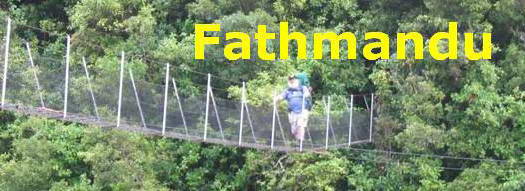I last used a passport coming back from England in 1968. God knows what happened to it, but I had to report it missing before I could apply for a new one, and obtain a certificate stating the police had been notified. Another unresolved complaint....
Bonny's parents retired to Norfolk Island, and Bonny made regular visits to see her mum, now living in care on the island. Early in our acquaintance, she suggested I accompany her on one of these visits, probably January 2010.
Well, it was a long way off and it might have been, for all I knew, like one of those loosely expressed invitations to come and have dinner some time; but, on the other hand, no-one had expressed any strong interest in me being a part of their life in six months' time for some years. So I reached into my budget and made room for a passport. It was good for 5 years, at any rate.
So when her mum died during Bonny's October visit, I was organised to travel, and headed over shortly afterwards to spend a week there.
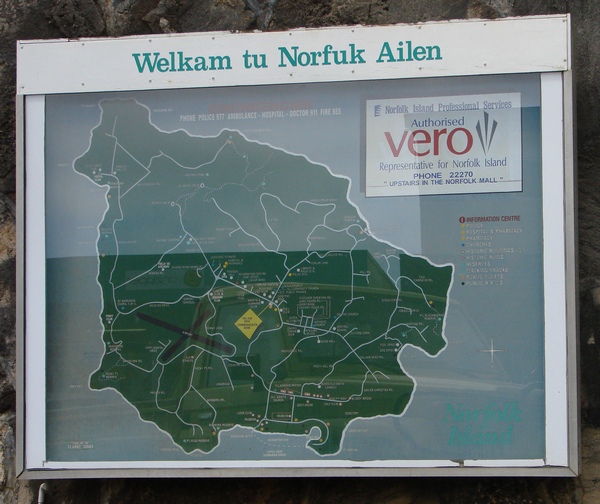
Norfolk Island is an Australian territory, about 8km x 5km, sited about 1100km NW of Auckland. It is subtropical with the closeness of the sea moderating temperatures, so that even in summer the temperature rarely rises above 30 degrees. Average rainfall is about the same as Auckland or a little more. The resident population, about 2000, divides about evenly into Australians, New Zealanders and those of Pitcairn Island descent, though these distinctions tend to be blurred somewhat with the passing of time. In any week there are approximately 500 tourists on the island, principally honeymooners and old people, the newly wed and the nearly dead as they are referred to locally, and they are a principal source of income for the island.
Norfolk Island has its own governing body, with a Prime Minister and cabinet ministers. It also boasts it's own language, a hybrid of 18th century English and Tahitian, spoken mainly by Pitcairn descendants. (See the map above). English is universally spoken, albeit for the most part with Australian vowels.
There is also a strong local tradition of bestowing nicknames, and there is a separate section of the telephone directory that enables you to fast-find a phone number when all you have is a "nikniem".
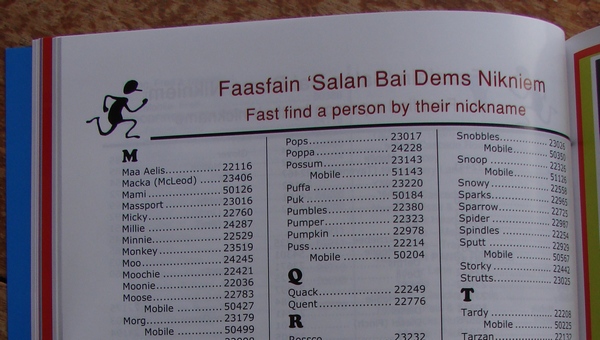
There is a weekly air service from Auckland, a couple of flights a week from Australia, and a cargo boat which calls every 4-6 weeks, which is unloaded by lighters.
I leave a somewhat chilly Auckland at 10am and arrive at Norfolk about 10.30am local time, to dry sunshine and a light which seems exceptionally bright and clear to my New Zealand eyes. I recalled the same shock returning from England years ago to the "harsh" New Zealand light. The island is in the middle of a dry spell. It has been a dry year and I learn later on that some of the creeks and wells that have traditionally supplied water have dried up this year for the first time in memory.
We drop my gear off and make coffee. (In my bag are half a dozen packs of Fair Trade coffee from an Auckland supermarket. Coffee beans are grown locally and have even won prizes internationally - they have a slightly higher caffeine content than beans grown elsewhere - but they are about twice the price of what I have brought with me. I have a number of other grocery items. The contents of the local supermarkets and stores are shipped from New Zealand or Australia and the prices reflect this.
There is a boat due in this week, so some of the shelves are a little bare. We look for lasagne pasta a day or two later, and it is sold out until the ship is unloaded.
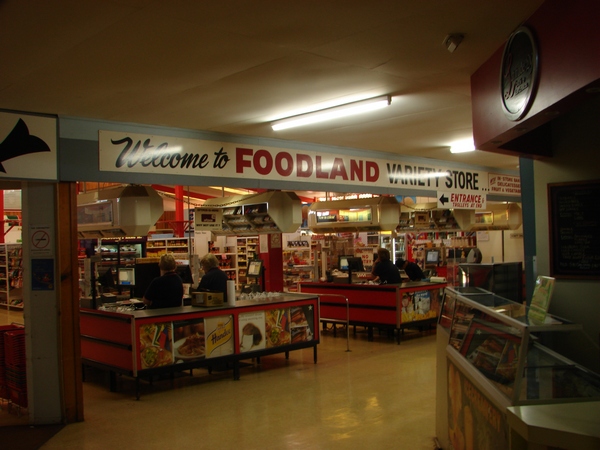
The display lacks some of the sophistication of our own big chains.
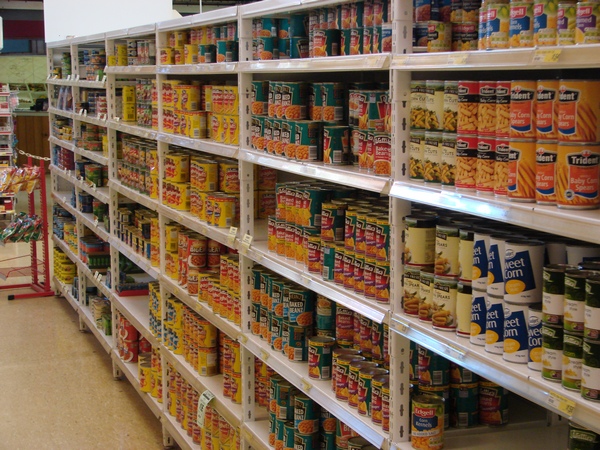
And nothing gets lightly replaced if the new item has to be shipped from New Zealand or Australia
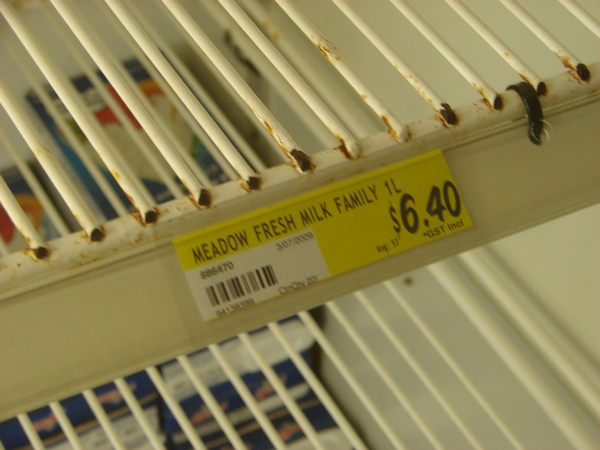
Milk comes in weekly from New Zealand by air. At the time of writing, milk in New Zealand is about $3.00 for 2 litres. Most people use long-life milk, slightly toasted in flavour, but relatively cheaper.
Nearly all fruit and vegetables are grown on the island, for fear of importing a pest or disease.
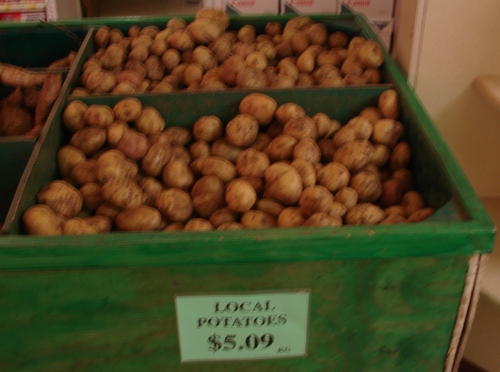
Supermarket prices are on the high side, but a farmers' market operates on Saturday morning.
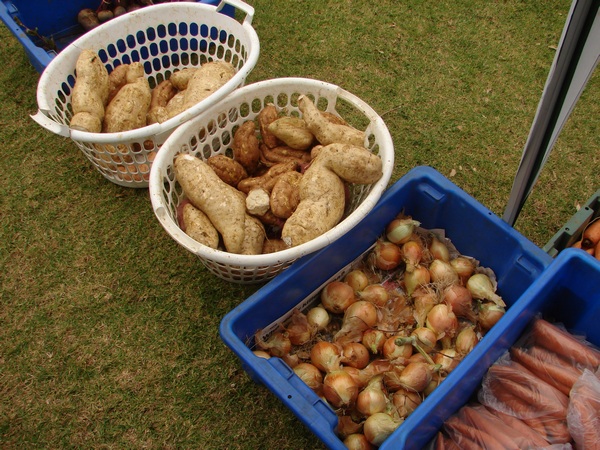
The paler big roots are yams, the smaller ones kumaras.
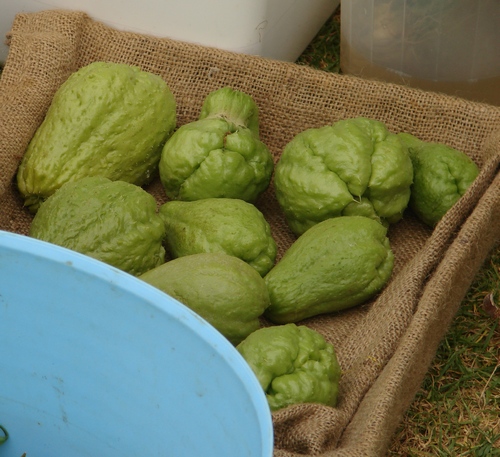
There have been times, as a local recipe book mentions, when chokos are the only green vegetable available on the island. (Chokos are held in considerably greater esteem on the island than back home, and a number of excellent recipes exist. I am a choko fan from way back.)
We head back to the house with our shopping and grab some lunch.
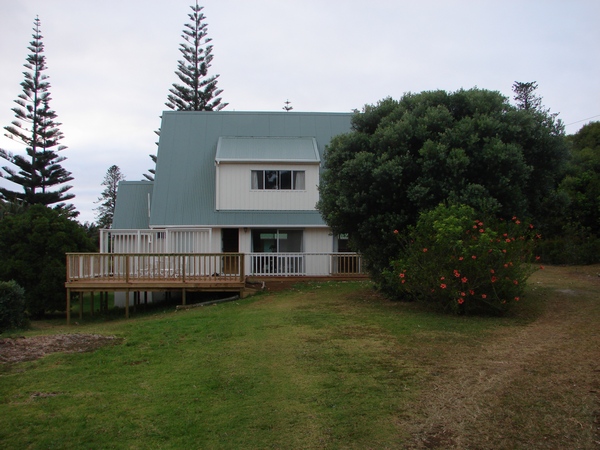
Bonny has recently taken up the original tile deck and she has had built an extensive deck on the front of the house. In her spare time she has been sanding and staining and painting and sanding and finishing, a little at a time. I am taken on a tour of the garden and even the lawn, when you look at it closely, tells you that you are in a different country. From the deck, the theme is subtropical:
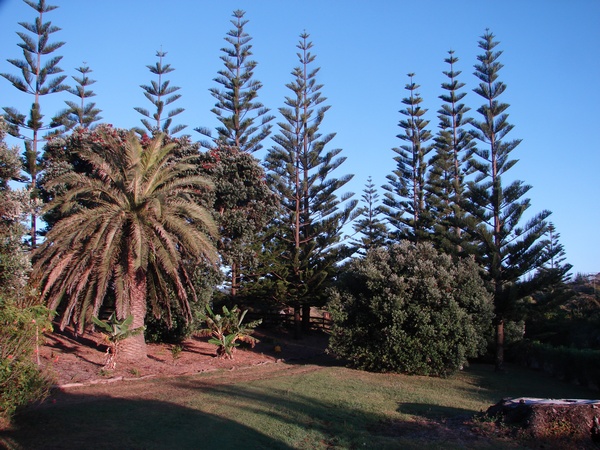
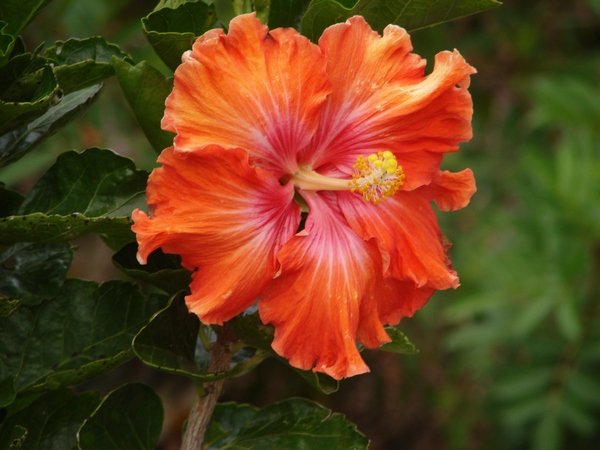
As the bite begins to come out of the noon sun, we head on down to Emily Bay. This is about the only part of the island that is not bordered by steep cliffs, and as a bonus, a reef across the mouth of the bay makes it an idyllic swimming beach, so clear that in water up to my neck I can look down and see my toenails.
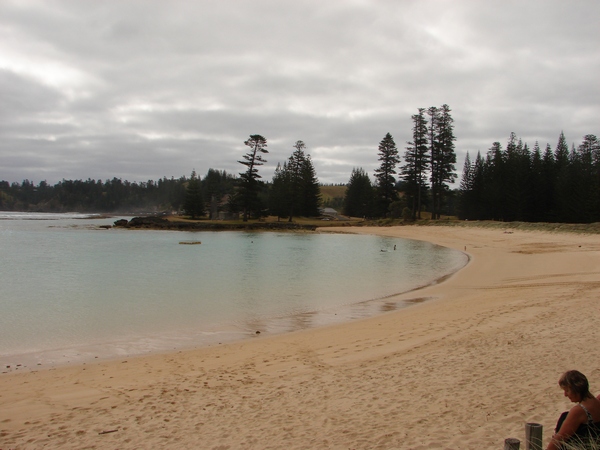
En route, we pause for a wander through the cemetery and pay our respects to Beverly, Bonny's mum, and Bonny fills me in on the details of Norfolk funerals. They are community events. Local gardens contribute flowers, local women make wreaths, the coffin is built, the grave is dug. Everything falls into place.
I take a deep breath or two as I recall the funeral for my week-old daughter, Nell, at Centrepoint nearly 30 years ago, how the chippies made the coffin, and the silk dyers lined it, the food was organised, people notified, and so forth, and I recall, too, the community waiting for us as we returned from the hospital. It was a good place to be.
The changing shed looks much the same as the one I remember from fifty five years ago when I came to the island with my parents, but when I think about it, that was unpainted corrugated iron. It just feels the same.
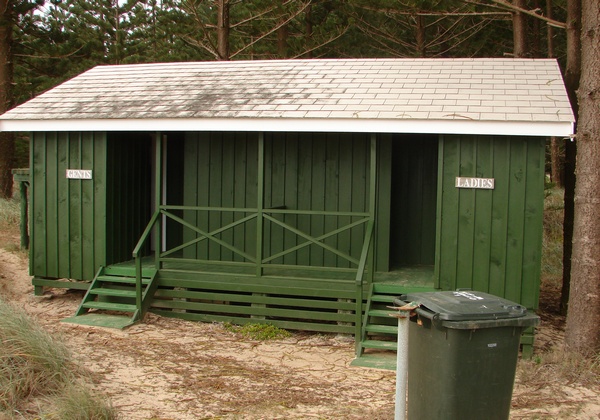
It is a small social ritual for a group of Bonny's friends that they meet at Emily Bay around 3 of an afternoon for a swim and a sit and a talk. There's Ricky, and Bill and Fran and Maeve and Julie, and it's a pleasure lying back snoozing in the sun and listening while they chat, sometimes in English, sometimes in Norfuk, the local language. It's close enough to English that if you listen carefully you can just about get the drift of what they're saying. As a tourist, it was an experience I would have missed.
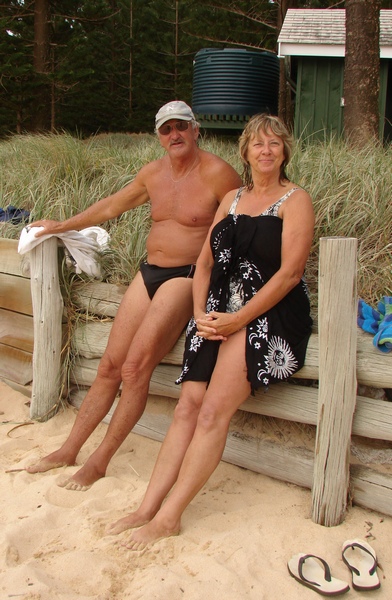
I have the beginnings of a pink as we head back up the hill. I notice a couple of things about driving on Norfolk. Everybody (except tourists) keeps hard left, and everybody (except tourists) raises an index finger from the steering wheel, as they pass another car, or cyclist, or pedestrian.
They have also an institution on the island called a "sleeping policeman". I have always been a believer in leaving sleeping policemen lie, but these buggers are lying in the middle of the road at intersections with the obvious intention of discouraging corner cutting. Would the real thing be as effective, I muse.
Even here, Norfolk is unusual, as I research the term a little further and discover that in most countries, their "sleeping policeman" is our judder bar. This is the Norfolk variety, with only his/her helmet visible.
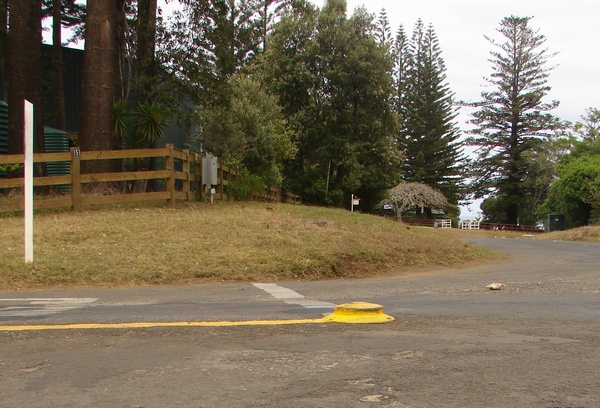
Also, if Norfolk wasn't already equipped with a name, it is the original Longacre Farm. Pasture and feed is sometimes scarce on the island, and full use is made of roadside verges. Cattle roam the island roads freely, and have right of way. Owners are identified by the eartag each cow wears. (I have a fridge magnet in the form of a yellow road sign, which I bought at the local mall and it says "Caution, Cattle Next 10km)
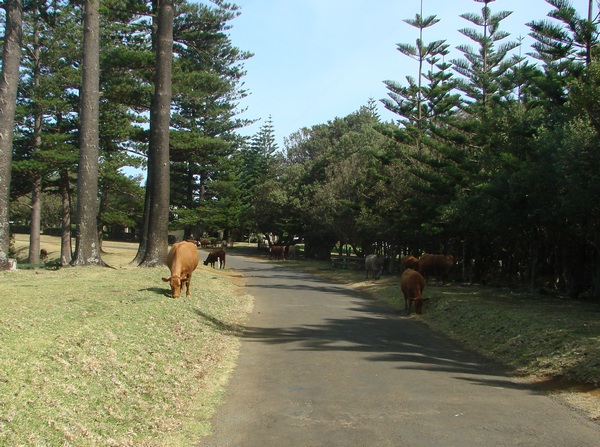
Most properties are equipped with cattle stops, or grids as they are known locally, as is the road into the shopping centre at Burnt Pine.
A cold beer awaits us in the fridge when we get back.
Beer is mostly Aussie and New Zealand in origin. All alcohol is sold by the one store on the island, the Bond, which is government run. It's duty free but prices reflect transport costs. Relatively speaking, because of it's greater volume per unit of alcohol, beer undergoes a greater price increase than do wine or spirits when compared with NZ and Australian prices.
There is a further custom, which I approve of. Visitors who take their air ticket with them when they purchase alcohol are given a further 33% discount. My bottle of Black Douglas, a fine, lightweight quaffing whisky, cost me all of $au14 for 1.125 litres. A locally labelled gin and vodka are available under the Bloody Bridge brand. Where it comes from originally I am not certain, though the island does boast a distillery which produces a line of elaborately bottled liqueurs.
